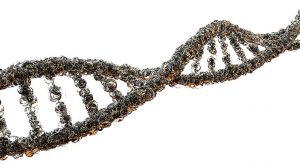Definition
noun
A form of parthenogenesis wherein female offspring develops from an unfertilized egg
Supplement
Parthenogenesis is regarded as a form of asexual reproduction. The offspring develops from an unfertilized egg. Parthenogenesis may be classified based on the sex of the offspring: (1) arrhenotokous parthenogenesis (or arrhenotoky), (2) thelytokous parthenogenesis (or thelytoky), and (3) deuterotokous parthenogenesis (deuterotoky).
The arrhenotoky is a form of parthenogenesis in which the unfertilized eggs develop into males. In contrast, thelytoky is a form of parthenogenesis in which unfertilized eggs develop into females. Deuterotokous parthenogenesis (deuterotoky) is one in which the unfertilized eggs may develop into males and females. Thelytoky occurs in invertebrates (e.g. arthropods) but less common in vertebrates. Some vertebrates that are capable of thelytoky include certain salamanders, fish, and reptiles (i.e. some whiptail lizards).
Automictic parthenogenesis is a form of thelytoky. Automictic parthenogenesis is characterized by the involvement of meiotic division in contrast to apomictic parthenogenesis that does not involve meiosis. Since meiosis takes place in automictic parthenogenesis, the egg is haploid. Diploidy in egg is restored by fusion, which may be by central fusion (i.e. the fusion of the first division non-sister nuclei) or by terminal fusion (i.e. the fusion of the second division sister nuclei).
Word origin: Greek thēlys (“female” ) + tók(os) (“offspring”)
Also called:
- thelytokous parthenogenesis
Compare:
See also:







